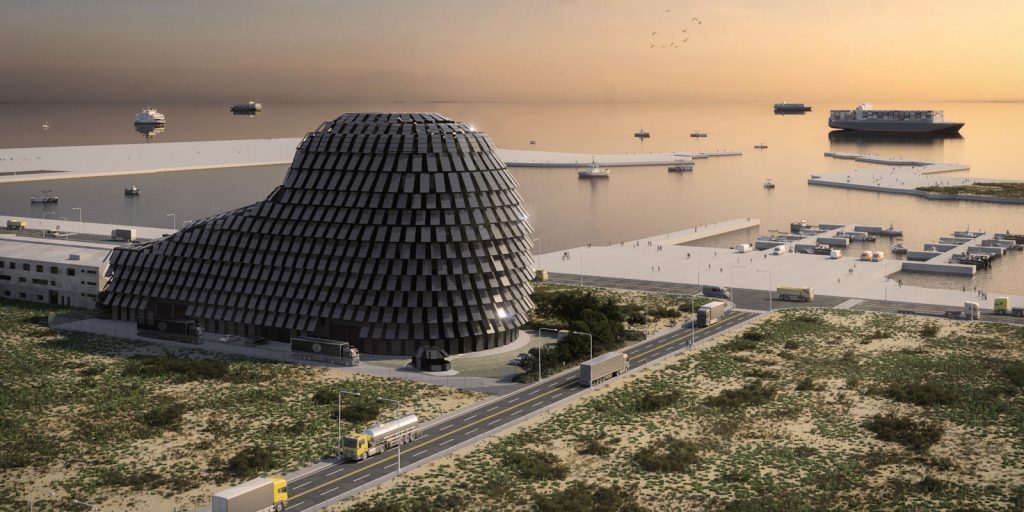Milan’s Contemporary Architecture with Archimapping

Discover Milan through its extraordinary contemporary architecture with Archimapping, the app from Politecnico di Milano. Explore the city’s hundred most iconic buildings and immerse yourself in its rich cultural history. Discover Milan’s Contemporary Architecture with Archimapping Milan, a city of art, fashion, and design, unveils another of its treasures in the splendid panorama of contemporary architecture with the introduction of Archimapping, the innovative app developed by Politecnico di Milano with the contribution of the Milano Community Foundation and the collaboration of AIM (Association for Metropolitan Interests). This app offers an unprecedented journey through Milan’s architectural history, presenting the city’s hundred most iconic buildings that have shaped its face from the Unification of Italy to the present day. An open-air museum of Contemporary Architecture Launched with an exciting presentation at the historical library of Politecnico di Milano, Archimapping has been met with great interest from professionals, students, tourists, and citizens eager to deepen their knowledge of Milanese architecture. This tool aims to promote the culture and identity of the city, encouraging people’s sense of belonging and rootedness in the places they inhabit. Teatro dal Verme 1872 Cimitero Monumentale Exploring Milan’s Iconic Architectures One of Archimapping’s distinctive features is its ability to transform Milan into an open air museum of contemporary architecture. Available in both Italian and English, the app offers precise geolocation and suggestions for thematic itineraries, allowing users to explore the city according to criteria of personal interest, whether typological, geographical, authorial, or chronological. The selected buildings represent a wide variety of styles and historical periods, reflecting Milan’s social, economic, and cultural evolution throughout the 19th, 20th, and 21st centuries. Each work is meticulously documented through descriptive cards, historical iconographic materials, bibliographic references, and video contributions, offering users a comprehensive and engaging overview. Among the routes proposed by the app, ten thematic itineraries stand out, guiding visitors to discover architectures of work, culture, and leisure, the metropolitan area, sacred architecture, residence and collective housing, schools and universities, theaters, museums, and exhibition pavilions, among others. Archimapping presents a rich selection of buildings symbolizing Milan, from the oldest monuments such as the Monumental Cemetery by Carlo Maciachini and the Teatro Dal Verme, to more contemporary achievements such as the Vertical Forest by Boeri Studio and the Generali Tower by Zaha Hadid Architects. Works by the most famous architects are also included, such as the Velasca Tower by BBPR and the Pirelli Skyscraper by Gio Ponti. Furthermore, the app offers an insider’s view of Milan’s cultural institutions and universities, which have significantly contributed to the city’s architectural richness. Among these, stand out the Prada Foundation by OMA, the New Campus of Bocconi University by Sanaa, and the Campus of the University of Milano Bicocca by Gregotti Associati. Verical Forest Boeri Studio| Testa 2015 Velasca Tower 1950-58 | Samonà 1959 Archimapping represents a valuable tool for anyone wishing to explore Milan through its architecture, offering a unique and in-depth perspective on the city’s rich cultural heritage. Thanks to this app, every corner of Milan turns into a page of architectural history to discover and appreciate.
Architectural Masterpieces Anticipated in 2024

Diverse projects in terms of size, approaches, and locations offer an opportunity to reflect on the direction the architecture world might take in the coming year. We’ve identified ten architectural marvels, some characterized by extreme innovation, others undergoing restoration. Discover more in this article. Egyptian Museum of Turin | Studio OMA CREDITS TO OMA The Egyptian Museum of Turin, erected in 1824 within the Collegio dei Nobili, is about to do an architectural revolution. Thanks to the visionary project conceived by Studio OMA in collaboration with David Gianotten, Andreas Karavanas, Andrea Tabocchini Architecture, T-Studio, and Andrea Longhi, the iconic structure will undergo a radical redesign, opening itself to the city and its community. Central to the innovation are the creation of Piazza Egizia, an enchanting, covered courtyard destined to become a lively public space, and six interconnected “urban rooms,” designed to host a variety of activities and attractions. Openings along the museum’s facade will invite visitors in, while the transparent covering of Piazza Egizia not only creates a bright and welcoming environment but also serves important eco-sustainable functions. This transformation not only strengthens the bond between the museum and the city but also offers a new inclusive cultural experience for all, with permanent exhibitions and events accessible to all audiences. Education Center by Kirimoto | Florence CREDITS TO ALVISI KIRIMOTO The Andrea Bocelli Foundation and the Alvisi Kirimoto studio join forces once again to create an educational and laboratory center within the Meyer pediatric hospital in Florence. Located in the northern part of the hospital area, the new building will stand out for its independent shape and slight inclination, creating a space entirely dedicated to children. Inside, a structure resembling a “leaf,” conceived by Massimo Alvisi, will host a variety of functions, promoting lightness and brightness. At the center of the building will be an oval-shaped musical laboratory in the form of a carillon, representing the project’s heart. As is typical in Alvisi Kirimoto’s projects, technical complexity will be hidden behind transparent surfaces supported by lightweight metal elements, creating a bright and welcoming environment. Restoration of Notre Dame de Paris Emmanuel Macron has announced that the Notre-Dame Cathedral in Paris will reopen to the public by 2024, with hopes for this to happen by December 8th. The restoration works, which began only in 2022 due to the pandemic and archaeological discoveries, focus on restoring the roof and spire according to the original design by Eugène Viollet-le-Duc from 1859. Despite controversies surrounding a modernization project, supported by Macron but abandoned after protests, the restoration is proceeding with over 800 million euros, including contributions from François Pinault and Bernard Arnault. New Sub-Central Library by Snøhetta | Beijing, China CREDITS TO PLOMP The new Sub-Central Library in Beijing will distinguish itself as a cutting-edge hub for learning and cultural exchange. Designed by Snøhetta after an international competition in 2018, the structure incorporates advanced technology and sustainable design. The self-supporting glass façade, unique in China, reflects architectural innovation. Inside, experiential spaces and an educational landscape promote shared learning. The building commits to sustainability with photovoltaic elements and solar heat reduction techniques. A benchmark for future libraries combines advanced functionality with environmental responsibility. Private Hida Takayama University by Sou Fujimoto | Hida City, Japan CREDITS TO HIDA TAKAYAMA Scheduled for April 2024, the Private Hida Takayama University aims to revitalize a rural area affected by demographic decline. Sou Fujimoto Architects is developing a campus that integrates learning with the surrounding mountainous landscape. Characterized by a wavy and accessible roof described as “an open hill”, the campus offers open spaces for socialization and inspiration. Fujimoto aims to create a dynamic learning environment that promotes interaction among students, faculty, and the local community, making the university not only an academic center but also a social and cultural reference point for the region. The self-supporting glass facade, unique in China, reflects architectural innovation. Inside, experiential spaces and an educational landscape promote shared learning. The building is committed to sustainability with photovoltaic elements and solar heat reduction techniques. A benchmark for future libraries combines advanced functionality with environmental responsibility. Sun Rock by MVRDV | Taiwan, China CREDITS TO MVRDV Signed by the Dutch architecture firm MVRDV, the project Sun Rock represents an innovative architectural work conceived as an “energy production tool” and symbolizes Taiwan’s ambitions for a sustainable transition to renewable energies. Located in the coastal industrial park of Changhua, the building houses offices, maintenance workshops, and storage spaces for renewable energy components on an area of 4,000 square meters of photovoltaic panels. The rounded shape is designed to maximize solar exposure, with a slope to the south and a dome to the north that optimize energy absorption. Sun Rock is self-sufficient, generating nearly 1 million kilowatt-hours of clean energy per year, with the ambition to increase this capacity to 1.7 million kWh annually. In addition to its function as an energy generator, the building offers a multifunctional space with a Data Room to monitor Taipower operations, a rooftop terrace with trees, and a dome of solar panels. Sun Rock embodies the vision of a greener future, transforming solar energy into a tangible resource for sustainability. The self-supporting glass facade, unique in China, reflects architectural innovation. Internally, experiential spaces and an educational landscape promote shared learning. The building is committed to sustainability with photovoltaic elements and solar heat reduction techniques. A benchmark for future libraries combines advanced functionality with environmental responsibility. Populus by Studio Gang | Denver, Colorado, USA CREDITS TO STUDIO GANG Designed by Studio Gang, Populus in Denver, Colorado, will be the first carbon-positive hotel in the United States, distinguishing itself as a pioneer of sustainable hospitality. Inspired by the Trembling Poplar trees, iconic to the American West, both in its exterior and its name, Populus pays tribute to nature. Jeanne Gang, the founder of Studio Gang, designed the hotel’s windows drawing inspiration from the growth of poplar trees, where the trunk, marked by dark eyes, sheds lower branches as it grows taller. This dynamic motif
